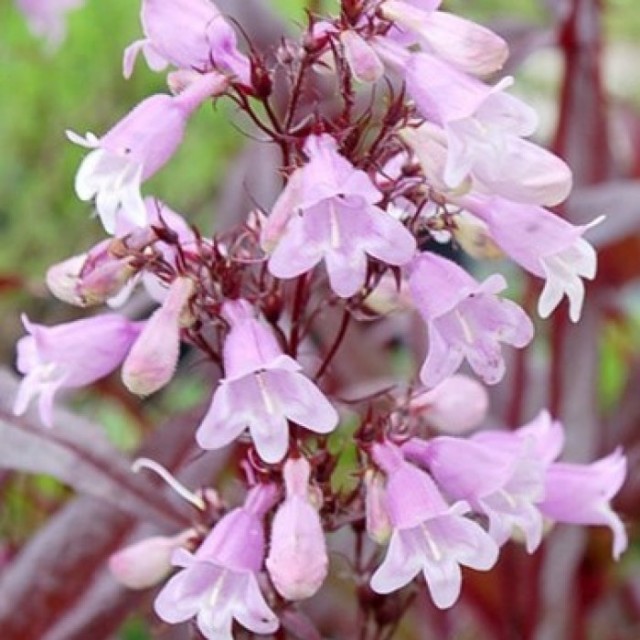COMMON NAME
Foxglove beardtongue 'Pocahontas'
SCIENTIFIC NAME
Penstemon digitalis 'Pocahontas'
Plant family
Plantain (Plantaginaceae)
Plant group
Wildflowers and Herbs
Pocohantas' is a cultivar of foxglove beardtongue with red foliage and lavender pink flowers. Foxglove beardtongue is a hairless perennial growing 3-5 feet tall when flowering. It can have one or more slender purple stems topped with a cluster of lavender flowers. Rhizomes can produce clones around the base.
240 reports
25+
OBSERVERS
240+
OBSERVATIONS
Identification hints
The common name of beard tongue comes from the tuft of hairs on the sterile stamen, which resembles a beard. The foliage can be semi-evergreen in the South.
Did you know?
The tuft of hairs on the anthers may be important in pollination of Foxglove. The hairs rub against the backs of bees and other insect pollinators that visit the plant and cause the anthers to bend in such a way as to deposit pollen on the backs of the insects.
DISTRIBUTION IN TH U.S.
There is no information available about this species.
HABITAT
There is no information available about this species.
ATTRIBUTES
Leaves
The foliage of 'Pocahontas' is burgundy. Before flowering, foxglove beardtongue leaves grow at the ground without a stem (basal rosette). The leaves grow to about 6" long by 2½" wide, oval shaped with smooth leaf margins. Once it begins to develop flowers, the leaves grow opposite one another on the stem, lance-shaped and with small teeth on the margins.
Flowers
Foxglove beardtongue stems terminate in a loose cluster of lavender flowers, which are borne on branches in groups of two. The flowers are tubular, the petals are divided into a lower lip with 3 lobes and an upper lobe with 2 lobes. The flowers have five stamens; four of the stamens are fertile (make pollen) and one is sterile.
Fruits
Fruit is a dry capsule filled with many small seeds. The seeds are gray and angled irregularly.
Bloom Time
Blooms between May and July.
See Menu
- 2021 Chicago Botanic Garden. All Rights Reserved.
-
Creative Commons
BY-NC-SA 4.0 - Terms of Use
- Privacy Policy
- Data Sharing and Citation Policies
- 2021 Chicago Botanic Garden. All Rights Reserved.



